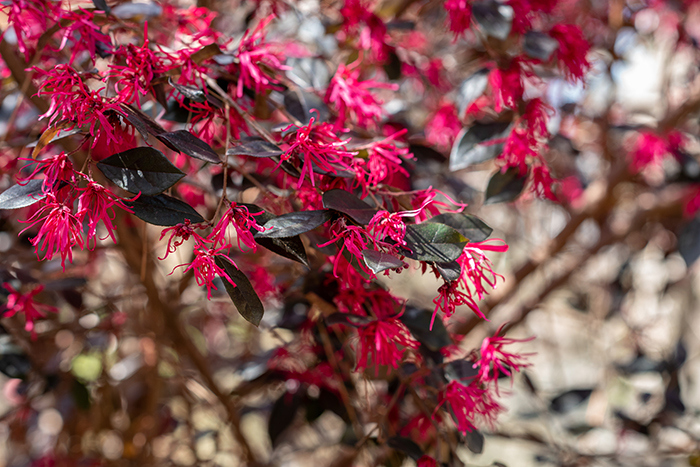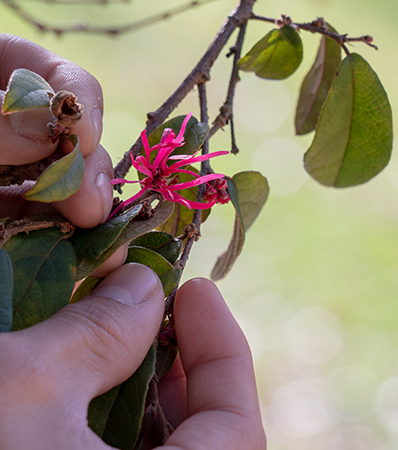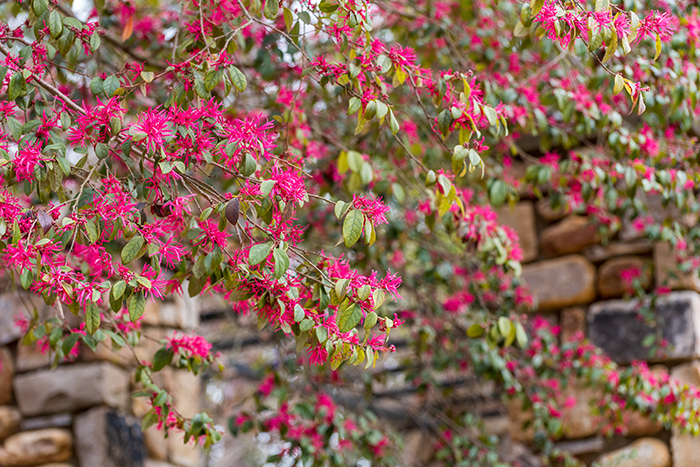Garden Talk

Botanical name: Loropetalum chinense
Common name: Chinese fringe flower
Family name: Hamamelidaceae (Witch hazel family)
Native range: Eastern Asia
Location in Duke Gardens: Culberson Asiatic Arboretum, Historic Gardens
USDA Hardiness Zones: 7-9
By Katherine Hale
Marketing & Communications Assistant
If you spy a plant sporting what look like pink pom-poms in mid- to late March, you have most likely discovered a Chinese fringe flower (Loropetalum chinense) in full bloom. This commonly grown evergreen species is usually kept pruned as a shrub or a hedge, but it is capable of growing 10 feet or more in height if left to its own devices, resulting in an impressive spectacle when flowering. On closer inspection, the vivid color comes from the elongated, strap-like “petals” (actually modified leaves) surrounding the small flowers at the center, hence the species’ scientific name—from the Greek loron, meaning "strap," and petalon means "leaf" or "petal."

If this seems suspiciously similar to witch hazels (Hamamelis spp.), there’s a good reason for it—this species was once known as H. chinensis before it was moved to a new genus, along with three closely related Asian relatives. Of the four, L. chinense is the most widespread, found across China and much of eastern Asia, and it’s a popular garden plant here in the Southeastern United States. Like witch hazels, Chinese fringe flowers have a pleasant fragrance, offering yet another reason to be outside on sunny spring days.
There are numerous cultivars of L. chinense, but they can be broadly divided into two groups. The first and most common are the purple-leafed and pink-flowering types, which were first introduced to the horticultural trade beginning in the 1980s. The other group contains the green-leafed and white-flowering varieties, which are no less charming but more easily mistaken for the unrelated fringetrees (Chionanthus spp.) that bloom later in the year.
Once you learn to spot it, you’ll start noticing Chinese fringe flower everywhere—not only here at Duke Gardens, but also on the Duke University campus and in neighborhoods and shopping centers throughout Durham and the Triangle area.
Photos from top: Clusters of Chinese fringe flower in the Culberson Asiatic Arboretum, by Cathi Bodine; close-up of a Chinese fringe flower and seed capsule, by Clarence Burke; red Chinese fringe flower (L. chinense var. rubrum 'Burgundy') in the Historic Gardens, by Cathi Bodine.






